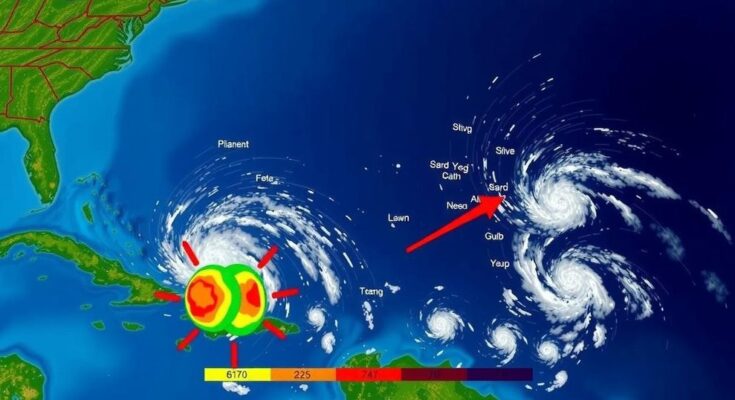The 2024 Atlantic hurricane season concluded with 18 named storms, surpassing typical averages. The season experienced a resurgence after a lull, highlighting significant hurricanes like Helene and Milton. NOAA’s forecasting technology and Hurricane Hunter missions contributed crucial data to understand storm dynamics. The Pacific hurricane activity remained below average.
The 2024 Atlantic hurricane season, which concludes on November 30, experienced significant activity, totaling 18 named storms, including 11 hurricanes and five major hurricanes. Notably, the season saw a resurgence in activity following a typical peak period slowdown. Five hurricanes made landfall in the contiguous United States, two of which were classified as major hurricanes. These occurrences align with forecasts from NOAA’s Climate Prediction Center, which expected 14 named storms, seven hurricanes, and three major hurricanes.
The season’s unusual trends included twelve named storms forming after the climatological peak in early September, and seven hurricanes emerging since September 25, marking a record for this timeframe. Factors contributing to a lull during the peak season included adverse weather conditions in Western Africa.
Hurricane Beryl set a record as the earliest Category-5 hurricane, while Hurricane Helene caused catastrophic flooding and significant fatalities across the southern Appalachians. Hurricane Milton intensified rapidly, leading to intense rainfall and tornadoes in Florida.
The Pacific hurricane season, in contrast, marked below-normal activity, with 12 named storms in the eastern Pacific and two in the central Pacific. Advances in NOAA’s forecasting technology and improved hurricane modeling contributed to the season’s predictions, while efforts such as Hurricane Hunter aircraft missions yielded critical atmospheric data.
The Atlantic hurricane season runs annually from June 1 to November 30, with NOAA’s Climate Prediction Center providing preseason forecasts to project named storms, hurricanes, and major hurricanes. The season is characterized by peaks in storm activity during late summer, influenced by various climatic conditions. The recent 2024 season was notable for its above-average storm occurrence, with significant impacts from the storms, including fatalities and extensive damage, highlighting the necessity of accurate forecasts and community preparedness.
In summary, the 2024 Atlantic hurricane season exhibited remarkable storm activity, consistent with NOAA’s predictions. The season’s impact was felt strongly in the continental United States, with substantial rainfall, flooding, and fatalities associated with major hurricanes. NOAA’s enhancements to predictive models and observational techniques played a crucial role in providing timely data for storm tracking and public safety.
Original Source: www.noaa.gov




